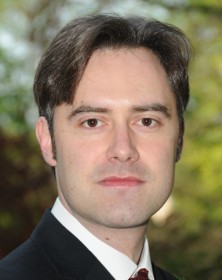
VASC Seminar
July

3:00 pm to 4:00 pm
Event Location: GHC 4405
Bio: Bastian Leibe is an associate professor for Computer Vision at RWTH Aachen University. He holds an M.Sc. degree from Georgia Institute of Technology (1999), a Diploma degree from the University of Stuttgart (2001) and a PhD from ETH Zurich (2004), all three in Computer Science. His research interests are in Computer Vision and Machine Learning, particularly in the areas of object recognition, tracking, 3D reconstruction, and semantic scene understanding. Bastian Leibe has published over 70 articles in peer-reviewed journals and conferences. Over the years, he received several awards for his research work, including the CVPR Best Paper Award in 2007, the DAGM Olympus Prize in 2008, the ICRA Best Vision Paper Award in 2009, and the ISPRS Journal of Photogrammetry and Remote Sensing U.V. Helava Award for the Best Paper within the 4-year period of 2008-2011. He recently received an ERC Starting Grant by the European Research Council.
Abstract: Visual scene understanding in unconstrained scenarios of daily human living has been one of the main goals of Computer Vision since the field’s beginnings. It is also a crucial requirement for many applications in the near future of mobile robotics and smart vehicles. While the general goal still poses considerable challenges, significant progress has been made in the development of mobile vision systems that can perform robust object detection and tracking in busy inner-city scenes.
In this talk, I will first present an approach for mobile multi-person tracking we have continuously improved over the last 7 years. In its latest instantiation, it is now capable of real-time operation on a mobile robot or a head-worn RGB-D camera.
Given this progress, it is appropriate to ask where do we stand? What factors proved important for success and what are the next steps we should address in order to make further progress? For this, I will show recent research results on tracking both known and unknown objects, analyzing person-object interactions, coupling 2D and 3D aspects of semantic segmentation, and on augmenting scene interpretation with localization and map data.